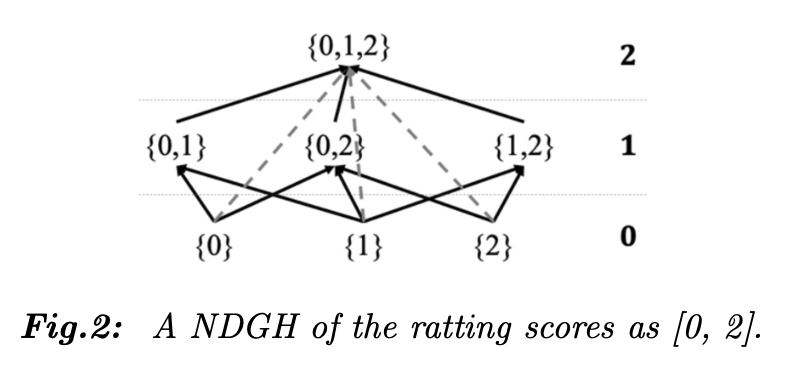Achieving Privacy Preservation Constraints based on K-Anonymity in conjunction with Adjacency Matrix and Weighted Graphs
Main Article Content
Abstract
A well-known privacy preservation model is k-anonymity. It is simple and widely applied in several real-life systems. To achieve k-anonymity constraints in datasets, all explicit identifiers of users are removed. Furthermore, the unique quasi-identifiers of users are distorted by their less specific values to be at least k indistinguishable tuples. For this reason, after datasets are satisfied by k-anonymity constraints, they can guarantee that all possible query conditions to them always have at least k tuples that are satisfied. Aside from achieving privacy preservation constraints, the data utility and the complexity of data transformation are serious issues that must also be considered when datasets are released. Therefore, both privacy preservation models are proposed in this work. They are based on k-anonymity constraints in conjunction with the weighted graph of correlated distortion tuples and the adjacency matrix of tuple distances. The proposed models aim to preserve data privacy in datasets. Moreover, the data utility and data transform complexities are also considered in the privacy preservation constraint of the proposed models. Furthermore, we show that the proposed data transformation technique is more efficient and effective by using extensive experiments.
Article Details

This work is licensed under a Creative Commons Attribution-NonCommercial-NoDerivatives 4.0 International License.
References
S. Riyana, K. Sasujit and N. Homdoung, “Privacy-enhancing data aggregation for big data analytics,” ECTI Transactions on Computer and Information Technology (ECTI-CIT), vol. 17, no. 3, pp. 452–468, 2023.
L. Sweeney, “K-anonymity: A model for protecting privacy,” International Journalon Uncertainty, Fuzziness and Knowledge-basedSystems, vol. 10, no. 5, pp. 557–570, Oct. 2002.
A. Machanavajjhala, J. Gehrke, D. Kifer and M. Venkitasubramaniam, “L-diversity: privacy beyond k-anonymity,” in 22nd International Conference on Data Engineering (ICDE’06), pp. 24–24, 2006.
N. Li, T. Li and S. Venkatasubramanian, “t-Closeness: Privacy Beyond k-Anonymity and l-Diversity,” 2007 IEEE 23rd International Conference on Data Engineering, Istanbul, Turkey, pp. 106-115, 2007.
M. Terrovitis, N. Mamoulis and P. Kalnis, “Privacy-preserving anonymization of set-valued data,” Proceedings of the VLDB Endowment, vol. 1, no. 1, pp. 115–125, Aug. 2008.
B. C. M. Fung, M. Cao, B. C. Desai and H. Xu, “Privacy protection for RFID data,” in Proceedings of the 2009 ACM Symposium on Applied Computing, SAC ’09, New York, NY, USA, pp. 1528–1535, 2009.
Q. Zhang, N. Koudas, D. Srivastava and T. Yu, “Aggregate Query Answering on Anonymized Tables,” 2007 IEEE 23rd International Conference on Data Engineering, Istanbul, Turkey, pp. 116-125, 2007.
R. C.-W. Wong, J. Li, A. W.-C. Fu and K. Wang., “(α, k)-anonymity: An enhanced k-anonymity model for privacy preserving data publishing,” in Proceedings of the 12th ACM SIGKDD International Conference on Knowledge Discovery and Data Mining, KDD ’06, Association for Computing Machinery, New York, NY, USA, pp. 754–759, 2006.
M. E. Nergiz and C. Clifton, “Thoughts on k-anonymization,” in 22nd International Conference on Data Engineering Workshops (ICDEW’06), pp. 96–96, 2006.
S. Riyana, “(lp1 , . . . , lpn )-privacy: privacy preservation models for numerical quasiidentifiers and multiple sensitive attributes, Journal of Ambient Intelligence and Humanized Computing, vol.12, pp. 9713–9729, 2021.
K. Nissim, S. Raskhodnikova and A. Smith, “Smooth sensitivity and sampling in private data analysis,” in Proceedings of the thirty-ninth annual ACM symposium on Theory of computing, pp. 75–84, 2007.
D. J. Bernstein, “Understanding brute force,” in Workshop record of ECRYPT STVL workshop on symmetric key encryption, eSTREAM report, Citeseer, vol. 36, pp. 2005., 2005.
J.-W. Byun, A. Kamra, E. Bertino and N. Li, “Efficient k-anonymization using clustering techniques,” in Proceedings of the 12th International Conference on Database Systems for Advanced Applications, DASFAA’07, Berlin, Heidelberg, pp. 188–200, 2007.
K. LeFevre, D. J. DeWitt and R. Ramakrishnan, “Mondrian multidimensional k-anonymity,” in 22nd International Conference on Data Engineering (ICDE’06), pp. 25–25, Apr. 2006.
R. J. Bayardo and R. Agrawal, “Data privacy through optimal k-anonymization,” in 21st International Conference on Data Engineering (ICDE’05), pp. 217–228, Apr. 2005.
R. Kohavi, “Scaling up the accuracy of naivebayes classifiers: A decision-tree hybrid,” in Proceedings of the Second International Conference on Knowledge Discovery and Data Mining, KDD’96, AAAI Press, pp. 202–207, 1996.


